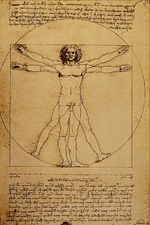
Back Simmetrie Afrikaans Simetría AN تناظر Arabic Simetría AST Simmetriya Azerbaijani Симметрия Bashkir Сіметрыя Byelorussian Сымэтрыя BE-X-OLD Симетрия Bulgarian প্রতিসাম্য Bengali/Bangla





Symmetry is a property of certain geometrical objects that appears the same when reflected along an axis or when rotated around a point. The opposite of symmetry is asymmetry, which refers to the absence of symmetry.
In reflectional symmetry, the axis of symmetry must cross the shape through the middle, dividing it into equal halves.
In rotational symmetry, the object is identical when it is rotated by a certain amount.
The precise notions of symmetry have various measures and operational definitions. For example, symmetry may be observed
- with respect to the passage of time;
- as a spatial relationship;
- through transformations such as rotation;
- through other kinds of transformations;[1]
- as an aspect of scientific models, language, music and even knowledge itself.[2][3]
- ↑ For example, operations such as moving across a regularly patterned tile floor or rotating an eight-sided vase, or in the way music is played.
- ↑ See, e.g., Mainzer, Klaus (2005). Symmetry and complexity: the spirit and beauty of nonlinear science. World Scientific. ISBN 981-256-192-7.
- ↑ Symmetric objects can be material, such as a person, crystal, quilt, floor tiles, or molecule, or it can be an abstract structure such as a mathematical equation or a series of tones (music).